- Lily of the Valley: Growing in the Garden, Types and Varieties Website Name
- Growing Lily of the Valley
- Types and Varieties of Lily of the Valley
- Growing Lily of the Valley in Your Garden
- Choosing a Location
- Preparing the Soil
- Planting
- Care and Maintenance
- Managing Spread
- Conclusion
- Choosing the Right Lily of the Valley Variety
- Hardiness Zone
- Size and Growth Habit
- Flower Color
- Fragrance
- Growing Conditions
- Tips for Planting and Caring for Lily of the Valley
- Planting
- Care
- Potential Issues
- Conditions for Successful Lily of the Valley Growth
- Sunlight
- Soil
- Watering
- Fertilization
- Temperature
- Companion Plants
- Propagation
- Pests and Diseases
- Common Problems and Solutions for Lily of the Valley
- 1. Pests and Diseases
- 2. Yellowing or Wilting Leaves
- 3. Lack of Flowering
- 4. Weed Competition
- 5. Toxicity
- Harvesting, Preserving, and Using Lily of the Valley
- Harvesting Lily of the Valley
- Preserving Lily of the Valley
- Using Lily of the Valley
- Interesting Facts and Trivia about Lily of the Valley
- 1. Fragrant Blooms
- 2. Symbolism
- 3. Wedding Tradition
- 4. May Day Flower
- 5. Medicinal Uses
- 6. Endangered Species
- Lily of the Valley: A Fragrant and Beautiful Addition to Your Garden
- Varieties
- Growing Lily of the Valley
- Caring for Lily of the Valley
- Questions and Answers:
- What is Lily of the Valley?
- How do I grow Lily of the Valley in my garden?
- Can Lily of the Valley grow in full sun?
- What are some common types and varieties of Lily of the Valley?
- Is Lily of the Valley poisonous?
- Videos: Daylilies Are A Must Have Perennial // Gardening with Creekside
Lily of the Valley is a delicate and fragrant flower that is loved by gardeners for its beautiful appearance and enchanting scent. This plant, also known as Convallaria Majalis, is native to the northern hemisphere and can be found growing in the wild in Europe, Asia, and North America. The Lily of the Valley is often associated with romance and is a popular choice for bridal bouquets and spring decorations. In addition to its beauty, this flower has a rich history and has been used for medicinal purposes for centuries.
There are several types and varieties of Lily of the Valley, each with its own unique characteristics. Some popular cultivars include ‘Albostriata’, which has variegated leaves, ‘Flore Pleno’, which has double flowers, and ‘Rosea’, which has pink flowers. These varieties offer a range of colors and patterns, allowing gardeners to create stunning displays in their gardens. Whether you prefer a traditional white Lily of the Valley or a more colorful option, there is sure to be a variety that suits your taste.
Growing Lily of the Valley in your garden is relatively easy, as this plant is well-adapted to a variety of conditions. It prefers partial to full shade, making it an excellent choice for woodland or shady gardens. The soil should be moist and well-drained, and the plant should be kept evenly watered. Lily of the Valley spreads quickly through underground rhizomes, so it’s important to choose a location where it has room to expand. This plant is also deer-resistant, making it a great option for gardens that are prone to wildlife grazing.
In conclusion, Lily of the Valley is a beautiful and versatile flower that can add a touch of elegance to any garden. With its lovely appearance, enchanting fragrance, and easy care requirements, it is a popular choice for gardeners around the world. Whether you choose to grow it as a groundcover or in a container, this plant is sure to bring joy and beauty to your outdoor space.
Lily of the Valley: Growing in the Garden, Types and Varieties Website Name
Growing Lily of the Valley
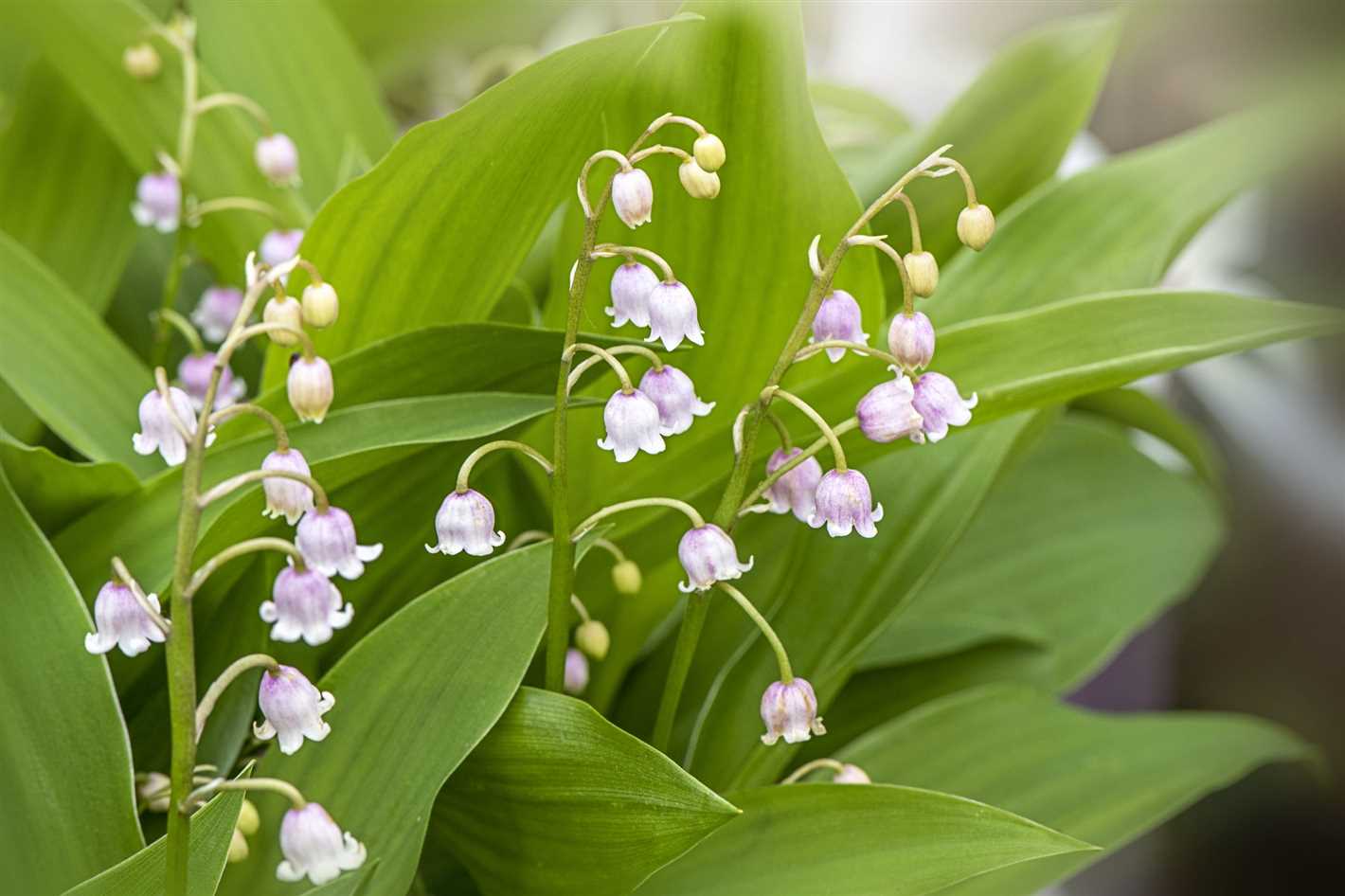
Lily of the Valley (Convallaria majalis) is a beautiful and fragrant flowering plant that is often found in gardens. It is known for its delicate white bell-shaped flowers and its sweet scent. Here are some tips for growing Lily of the Valley in your garden:
- Location: Lily of the Valley prefers shady areas in the garden, although it can tolerate some sunlight. It is best to plant it in well-draining soil.
- Planting: Plant Lily of the Valley in the early spring or fall. Dig a hole that is twice the size of the root ball and place the plant in the hole, making sure the crown is level with the ground.
- Watering: Keep the soil consistently moist, but not waterlogged. Water regularly, especially during dry periods.
- Maintenance: Remove any weeds that may compete with the Lily of the Valley for nutrients. Mulching can help suppress weeds and conserve moisture.
- Propagation: Lily of the Valley can be propagated by division. In the early spring or fall, dig up the plant and divide the rhizomes into smaller clumps. Replant the clumps in desired locations.
Types and Varieties of Lily of the Valley
There are several types and varieties of Lily of the Valley, each with its own unique characteristics. Here are some popular ones:
| Type/Variety | Description |
|---|---|
| Convallaria majalis var. rosea | A variety with pink flowers instead of the usual white. The pink color adds a touch of uniqueness to the plant. |
| Convallaria majalis ‘Albostriata’ | A cultivar with variegated leaves that have creamy white edges. It adds a splash of color to the garden even when not in bloom. |
| Convallaria majalis ‘Flore Pleno’ | A double-flowering variety with extra petals, creating a fuller appearance. It is highly sought after for its ornamental value. |
These are just a few examples of the types and varieties of Lily of the Valley available. Each one has its own unique charm and can add beauty to any garden.
Growing Lily of the Valley in Your Garden
Lily of the Valley is a beautiful and fragrant flower that can add a touch of elegance to any garden. Known for its delicate bell-shaped flowers and rich, green foliage, this perennial plant is a favorite among gardeners. If you’re looking to grow Lily of the Valley in your own garden, here are some tips to help you get started.
Choosing a Location
Lily of the Valley thrives in areas with partial shade and moist, well-drained soil. Ideally, choose a location that receives morning sun and afternoon shade. Avoid planting in areas with full sun, as it can cause the delicate flowers to fade quickly.
Preparing the Soil
Before planting Lily of the Valley, it is important to prepare the soil properly. This flower prefers soil that is rich in organic matter and has good drainage. You can amend the soil with compost or well-rotted manure to improve its fertility. Make sure to remove any weeds or grass from the planting area to give the Lily of the Valley room to grow.
Planting
It is best to plant Lily of the Valley in the spring or fall when the weather is cool. Dig a hole that is twice as wide and deep as the root ball. Place the plant in the hole and backfill with soil, gently pressing it down to eliminate any air pockets. Water the plant thoroughly after planting.
Care and Maintenance
Lily of the Valley requires minimal care once established. Water the plant regularly, especially during dry periods, to keep the soil moist. Mulching around the plant can help retain moisture and suppress weeds. It is also a good idea to fertilize the plant annually with a balanced fertilizer in early spring.
Managing Spread
Lily of the Valley has a tendency to spread rapidly and can become invasive if left unchecked. To prevent this, consider planting it in containers or using barriers to confine its growth. Regularly thinning out overcrowded clumps can also help keep it in check.
Conclusion
Growing Lily of the Valley in your garden can bring a touch of elegance and fragrance to your outdoor space. By choosing the right location, preparing the soil, and providing proper care, you can enjoy the beauty of this perennial flower for years to come. Just remember to manage its spread to prevent it from taking over your garden.
Choosing the Right Lily of the Valley Variety
Lily of the Valley is a beautiful and fragrant perennial flower that is popular in home gardens. When choosing a variety of Lily of the Valley to grow in your garden, there are several factors to consider:
Hardiness Zone
First, you should consider the hardiness zone of your region. Lily of the Valley is native to temperate areas and prefers cooler climates. It is hardy in zones 2-7, so if you live in a zone outside of this range, you may have difficulty growing Lily of the Valley successfully.
Size and Growth Habit
Lily of the Valley varieties can vary in size and growth habit. Some varieties are more compact and form dense clumps, while others spread more vigorously. Consider the available space in your garden and choose a variety that will fit well and complement the overall design of your garden.
Flower Color
While the most common color for Lily of the Valley flowers is white, there are also varieties available with pink or yellow blooms. Consider your personal preference and the existing color scheme in your garden when choosing a variety with the right flower color.
Fragrance
One of the main attractions of Lily of the Valley is its sweet fragrance. However, the intensity of the fragrance can vary among different varieties. If fragrance is important to you, look for varieties that are known for their strong scent.
Growing Conditions
Lily of the Valley prefers partially shaded areas with moist, well-drained soil. However, some varieties are more tolerant of sun or shade, so consider the specific growing conditions in your garden when selecting a variety. Additionally, some varieties may be more resistant to pests and diseases, so be sure to choose a variety that is suitable for your specific conditions.
By considering these factors, you can choose the right Lily of the Valley variety that will thrive in your garden and bring beauty and fragrance to your outdoor space.
Tips for Planting and Caring for Lily of the Valley
Planting
When planting lily of the valley, follow these tips to ensure proper growth and development:
- Choose a planting location that receives partial to full shade. Lily of the valley prefers cool conditions and does not tolerate strong sunlight.
- Prepare the soil by loosening it and removing any weeds or debris. Lily of the valley prefers well-draining soil.
- Dig a small hole for each plant, making sure to space them about 6-8 inches apart. Lily of the valley forms spreading colonies, so adequate spacing is important.
- Place the plants in the holes and cover the roots with soil. Gently firm the soil around the plants to ensure they are secure.
- Water the newly planted lily of the valley thoroughly, making sure the soil is evenly moist. They have a shallow root system, so regular watering is essential.
Care
To keep your lily of the valley healthy and beautiful, remember these care tips:
- Water the plants regularly, especially during dry spells. Aim to keep the soil consistently moist, but not waterlogged.
- Apply organic mulch around the plants to help maintain soil moisture and control weeds. Be careful not to cover the crowns of the plants with mulch.
- Feed the plants with a balanced fertilizer in early spring and again after flowering. This will provide the necessary nutrients for vigorous growth.
- Remove any yellow or brown leaves to keep the plants looking tidy and prevent the spread of diseases.
- Divide the lily of the valley plants every 3-4 years to prevent overcrowding and encourage better blooming.
Potential Issues
While lily of the valley is generally a hardy plant, it can still face a few problems. Keep an eye out for the following:
| Issue | Possible Solutions |
|---|---|
| Yellowing leaves | Ensure the plants are receiving adequate water and are not overcrowded. |
| Powdery mildew | Improve air circulation and avoid overhead watering. Treat with a fungicide if necessary. |
| Slug damage | Use slug baits or traps to control slugs, or handpick them off the plants. |
By following these planting and care tips, you can enjoy the beauty and fragrance of lily of the valley in your garden for years to come.
Conditions for Successful Lily of the Valley Growth
Sunlight
Lily of the Valley thrives in partial shade to full shade conditions. While it can tolerate some sunlight, excessive exposure to direct sunlight can lead to leaf burn and stunted growth.
Soil
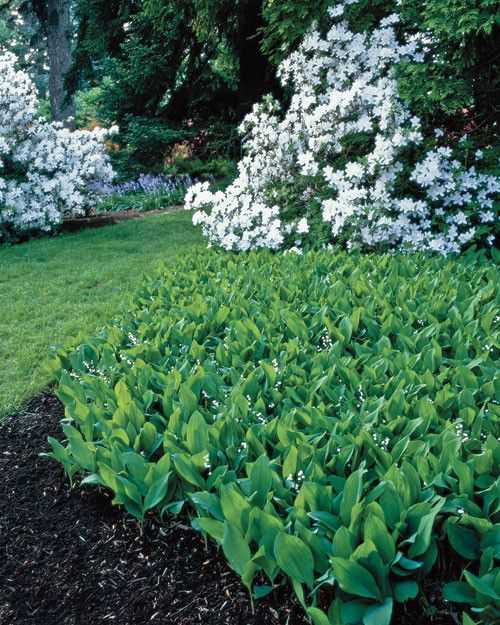
Lily of the Valley prefers well-draining, moist soil with a slightly acidic to neutral pH level. It can tolerate various soil types, including sandy, loamy, and clay soils, but it is important to ensure that the soil does not become waterlogged, as this can cause root rot.
Watering
Regular watering is essential for successful Lily of the Valley growth. The soil should be kept consistently moist, but not overly wet. It is important to avoid overwatering, as this can lead to root rot.
Fertilization
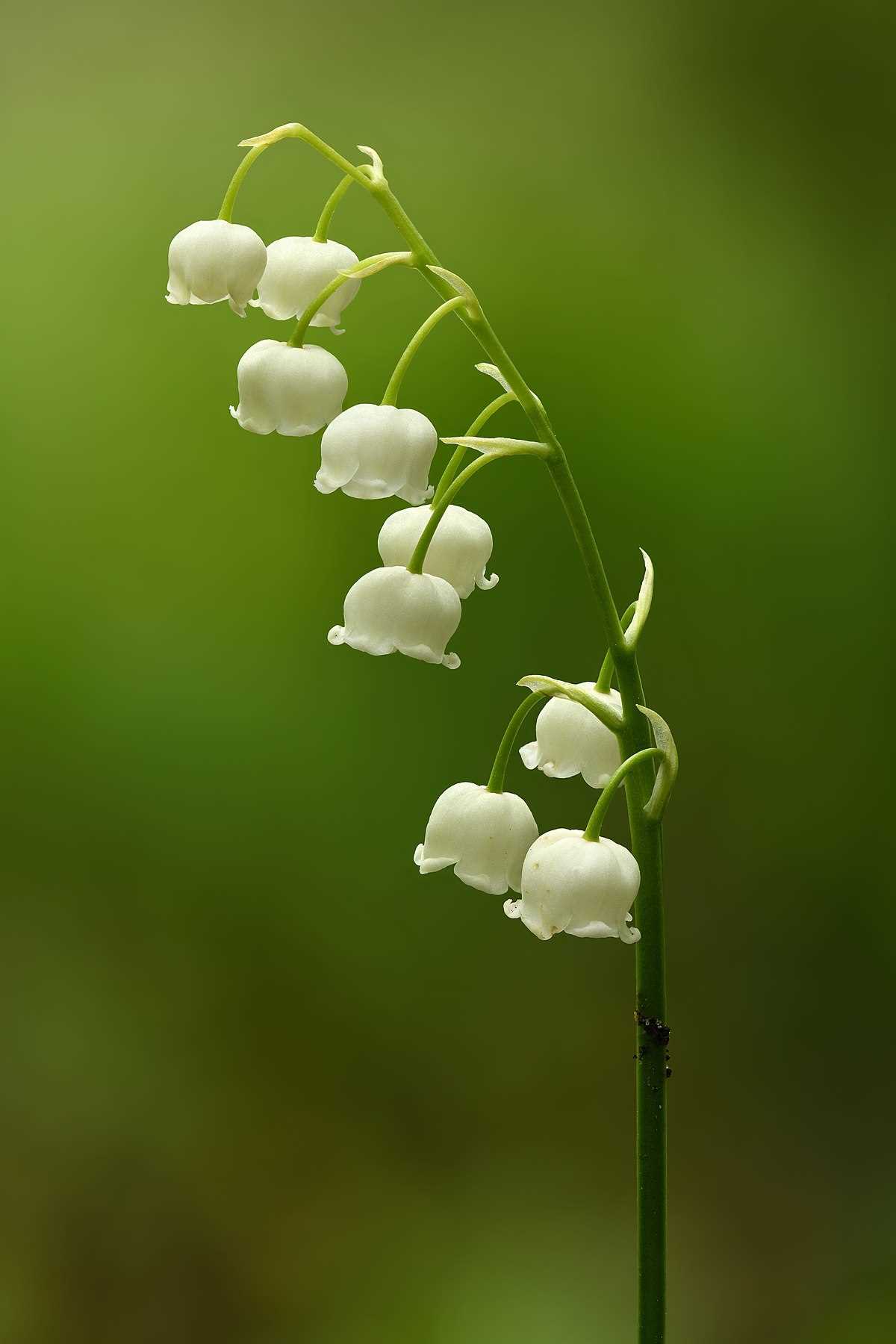
Lily of the Valley does not require heavy fertilization. In fact, excessive fertilization can result in weak growth and decreased flower production. Apply a balanced, slow-release fertilizer in early spring to promote healthy growth.
Temperature
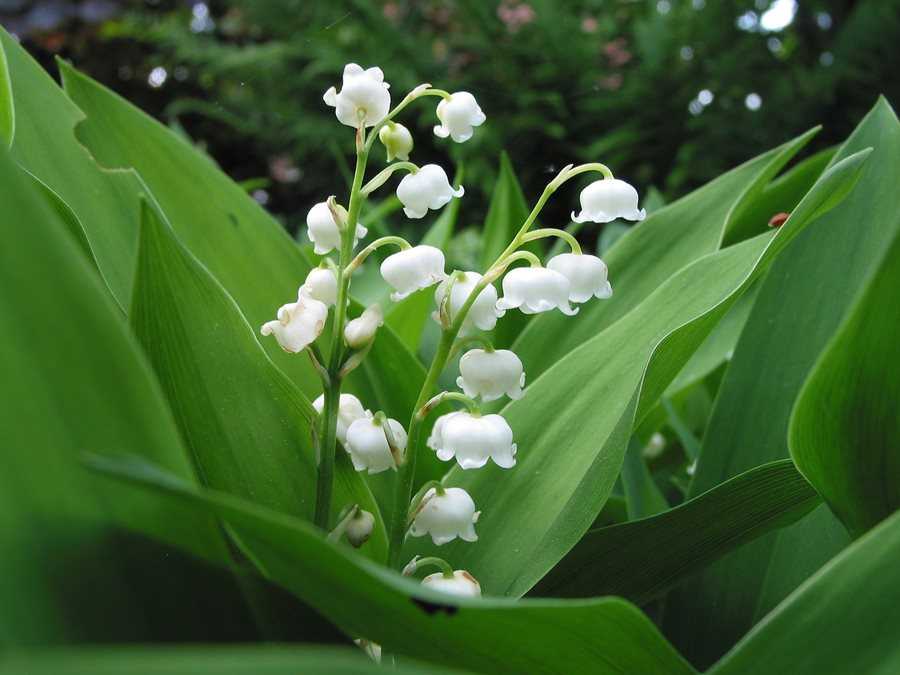
Lily of the Valley is a cold-hardy plant and can tolerate temperatures down to USDA hardiness zone 2. However, it prefers cool to mild temperatures, typically ranging from 55°F to 65°F (13°C to 18°C).
Companion Plants
Lily of the Valley can be planted alongside other shade-loving plants, such as ferns, hostas, and astilbes. These plants create a harmonious and visually appealing garden setting while providing additional shade and protection for the Lily of the Valley.
Propagation
Lily of the Valley can be propagated by division or from seeds. Division should be done in early spring or after the plants have finished flowering. Seeds can be sown in the fall and require a period of cold stratification before germination.
Pests and Diseases
Lily of the Valley is relatively resistant to most pests and diseases. However, it can be susceptible to slug and snail damage, as well as fungal leaf spots. Regular monitoring and appropriate preventive measures, such as slug bait and proper spacing, can help prevent these issues.
Common Problems and Solutions for Lily of the Valley
1. Pests and Diseases
Lily of the Valley can be susceptible to certain pests and diseases. Some common problems include:
- Aphids: These small insects feed on the plant sap and can cause stunted growth and distorted foliage. To control aphids, you can wash them off the plant with a strong stream of water or use insecticidal soap.
- Slugs and snails: These pests can feed on the leaves and flowers of Lily of the Valley. To control them, you can handpick them off the plant or use organic slug and snail baits.
- Leaf spot: Leaf spot is a fungal disease that causes dark spots on the leaves. To prevent leaf spot, ensure good air circulation around the plants and avoid overhead watering. If leaf spot occurs, remove and destroy the affected leaves.
2. Yellowing or Wilting Leaves
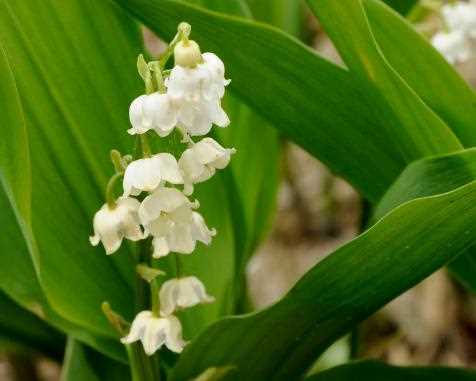
If you notice yellowing or wilting leaves on your Lily of the Valley, it may be a sign of improper watering or soil conditions:
- Overwatering: Lily of the Valley prefers moist but well-drained soil. Overwatering can lead to root rot and yellowing leaves. Allow the soil to partially dry out between waterings.
- Underwatering: If the leaves are wilting and turning yellow, it may indicate that the plants are not receiving enough water. Water the plants thoroughly and regularly, especially during dry periods.
- Poor soil drainage: If the soil doesn’t drain well, it can cause waterlogged conditions, leading to yellowing leaves. Improve soil drainage by adding organic matter, such as compost, to the planting area.
3. Lack of Flowering
If your Lily of the Valley is not flowering, there could be a few reasons:
- Insufficient sunlight: Lily of the Valley prefers partial to full shade. If the plants are not receiving enough sunlight, they may not produce flowers. Ensure they are planted in a suitable location with the right amount of shade.
- Improper planting depth: Lily of the Valley bulbs should be planted about 2 inches deep. If they are planted too deep or too shallow, they may not flower. Check the planting depth and adjust if necessary.
- Immature bulbs: It can take several years for Lily of the Valley bulbs to mature and produce flowers. Be patient and give them time to establish before expecting flowers.
4. Weed Competition
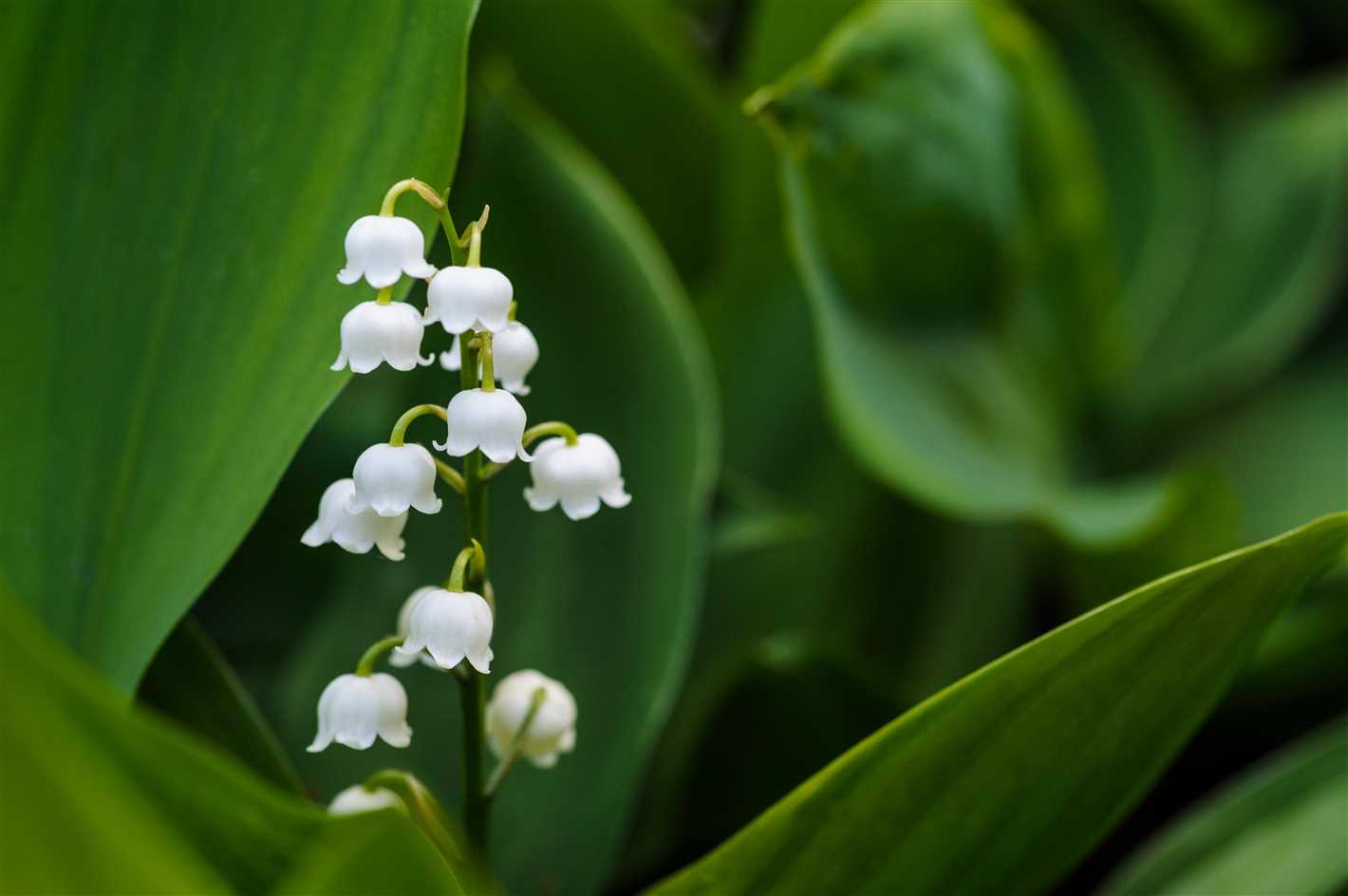
Another common problem with Lily of the Valley is weed competition. Weeds can compete with the plants for nutrients and water, affecting their growth and flowering. To prevent weed growth, you can mulch around the plants with a layer of organic mulch, such as wood chips or straw.
5. Toxicity
Note that Lily of the Valley is toxic if ingested, so keep it away from children and pets. It’s important to handle the plant with care and wash your hands after working with it.
Harvesting, Preserving, and Using Lily of the Valley
Lily of the Valley is a delicate and fragrant flower that can be harvested and preserved for various uses. Whether you want to create beautiful floral arrangements, make natural skincare products, or simply enjoy the scent of these lovely flowers, here are some tips on how to harvest, preserve, and use Lily of the Valley.
Harvesting Lily of the Valley
To harvest Lily of the Valley, wait until the flowers are fully bloomed and the fragrance is at its peak. It’s best to harvest them in the early morning when the flowers are fresh and the temperatures are cooler. Using a pair of sharp gardening shears, cut the stems close to the ground, taking care not to damage the surrounding plants or foliage.
Preserving Lily of the Valley
To preserve Lily of the Valley, there are a few methods you can try:
- Drying: Hang the harvested flowers upside down in a cool, dark, and well-ventilated area. Let them dry completely, which can take several weeks. Once dried, the flowers can be used in various crafts, potpourri, or floral arrangements.
- Pressing: Place the freshly harvested flowers between sheets of absorbent paper, such as blotting paper or parchment paper. Place heavy books or a flower press on top to apply pressure. Leave them pressed for a few weeks until they are fully dried and flattened. Pressed Lily of the Valley flowers can be used in crafts, card making, or framed displays.
- Freezing: If you want to preserve the fresh fragrance of Lily of the Valley, you can freeze the flowers. Place the freshly harvested flowers in an airtight container or freezer bag and store them in the freezer. Frozen Lily of the Valley can be used in floral arrangements or added to drinks and cocktails as an edible decoration.
Using Lily of the Valley
Lily of the Valley can be used in a variety of ways:
- Floral arrangements: The delicate and fragrant flowers of Lily of the Valley make a stunning addition to bouquets and floral arrangements. Combine them with other spring flowers for a beautiful display.
- Natural skincare products: The scent of Lily of the Valley is often used in perfumes and skincare products. You can infuse the flowers in carrier oils, such as jojoba oil or almond oil, to create your own natural fragrance or skincare products.
- Edible uses: While Lily of the Valley is not typically consumed in large quantities due to its toxicity, the flowers can be used sparingly as a garnish for desserts, cocktails, or salads. Use caution and always research the safe culinary uses of Lily of the Valley before consuming.
With these tips, you can make the most of your Lily of the Valley harvest and enjoy its beauty and fragrance in various ways.
Interesting Facts and Trivia about Lily of the Valley
1. Fragrant Blooms
The Lily of the Valley is famous for its sweet and delicate fragrance. The small bell-shaped flowers exude a captivating scent that is often used in perfumes and soaps. The aroma is especially potent in the early morning and evening hours.
2. Symbolism
Lily of the Valley holds various symbolic meanings. It is commonly associated with the return of happiness and is often considered a symbol of purity, humility, and sweetness. In some cultures, it is also believed to bring luck and protection against evil spirits.
3. Wedding Tradition
In many European countries, it’s a tradition to include Lily of the Valley in wedding bouquets and decorations. The flower is considered a good luck charm for a happy marriage and is said to bring joy and harmony to the couple’s life together.
4. May Day Flower
In some cultures, Lily of the Valley is associated with May Day or International Workers’ Day. It is a common tradition to offer small bouquets of these flowers to friends and loved ones as a sign of affection and to celebrate the arrival of spring.
5. Medicinal Uses
Lily of the Valley has been used in traditional medicine for centuries. It contains a compound called convallatoxin, which has some cardiac-stimulant properties. However, it is highly toxic and should only be used under medical supervision.
6. Endangered Species
The wild variety of Lily of the Valley, Convallaria majalis, is considered an endangered species in some regions due to habitat loss and overcollection. It is important to protect and preserve these delicate plants to ensure their survival for future generations.
| Interesting Facts and Trivia about Lily of the Valley |
|---|
| 1. Fragrant Blooms |
| 2. Symbolism |
| 3. Wedding Tradition |
| 4. May Day Flower |
| 5. Medicinal Uses |
| 6. Endangered Species |
Lily of the Valley: A Fragrant and Beautiful Addition to Your Garden
If you’re looking to add a touch of elegance and fragrance to your garden, look no further than the Lily of the Valley. This delicate and beautiful flower is a favorite among gardeners for its soothing aroma and enchanting appearance.
Originating from Europe and Asia, the Lily of the Valley, or Convallaria majalis, is a perennial flowering plant that belongs to the family Asparagaceae. It is known for its distinctive bell-shaped white flowers that hang gracefully from arching stems.
The Lily of the Valley is a shade-loving plant, making it an ideal choice for gardens with partially shaded areas. It thrives in moist and well-drained soil, making it perfect for planting in woodland gardens or areas with higher levels of humidity.
Varieties
There are several varieties of Lily of the Valley to choose from, each with its own unique characteristics:
- Albostriata: This variety features white flowers with green-striped leaves, adding a touch of visual interest to the plant.
- Fortin’s Giant: Known for its larger flowers and leaves, this variety makes a stunning focal point in any garden.
- Prolificans: As the name suggests, this variety is a prolific bloomer, producing more flowers than other varieties.
Growing Lily of the Valley
If you’re considering adding Lily of the Valley to your garden, follow these steps to ensure successful growth:
- Choose the right location: Select a shady spot in your garden with moist, well-drained soil.
- Prepare the soil: Loosen the soil and add organic matter such as compost to improve drainage and fertility.
- Plant the rhizomes: Dig small holes and plant the Lily of the Valley rhizomes about 1-2 inches deep and 6-12 inches apart.
- Water regularly: Keep the soil consistently moist, but not waterlogged, throughout the growing season.
- Monitor for pests: Lily of the Valley is relatively pest-resistant, but keep an eye out for slugs and snails, which may feed on the leaves.
Caring for Lily of the Valley
Lily of the Valley is a low-maintenance plant, but a few care tips can help ensure its health and beauty:
- Remove spent flowers: Remove faded flowers to prevent the plant from using energy to produce seeds.
- Divide clumps every few years: Lily of the Valley can form dense clumps over time. Divide these clumps every three to five years to maintain healthy growth.
- Provide occasional fertilization: Apply a balanced fertilizer in early spring or late fall to promote lush foliage and vibrant blooms.
The Lily of the Valley is a timeless classic that brings beauty and fragrance to any garden. With proper care and attention, this charming plant will reward you with its enchanting blooms year after year.
Questions and Answers:
What is Lily of the Valley?
Lily of the Valley is a fragrant perennial plant that is native to Europe and North America. It is known for its delicate white flowers and sweet scent.
How do I grow Lily of the Valley in my garden?
To grow Lily of the Valley in your garden, you will need a shady spot with well-draining soil. Plant the pips (rhizomes) in the desired location, about 1 inch below the soil surface. Water them regularly and make sure the soil stays moist but not waterlogged. They will spread over time, forming a beautiful groundcover.
Can Lily of the Valley grow in full sun?
Lily of the Valley prefers shady conditions and will not thrive in full sun. It is best to plant them in a location that receives partial shade or dappled sunlight.
What are some common types and varieties of Lily of the Valley?
There are several common types and varieties of Lily of the Valley, including Convallaria majalis ‘Albostriata’ (Variegated Lily of the Valley), Convallaria majalis ‘Fortin’s Giant’ (Double-flowered Lily of the Valley), and Convallaria majalis ‘Rosea’ (Pink Lily of the Valley). Each of these varieties offers unique characteristics and can add beauty to your garden.
Is Lily of the Valley poisonous?
Yes, Lily of the Valley is considered to be toxic if ingested. All parts of the plant, including the flowers, leaves, and rhizomes, contain cardiac glycosides that can cause various symptoms if consumed. It is important to keep this plant away from children and pets who may be tempted to eat it.







